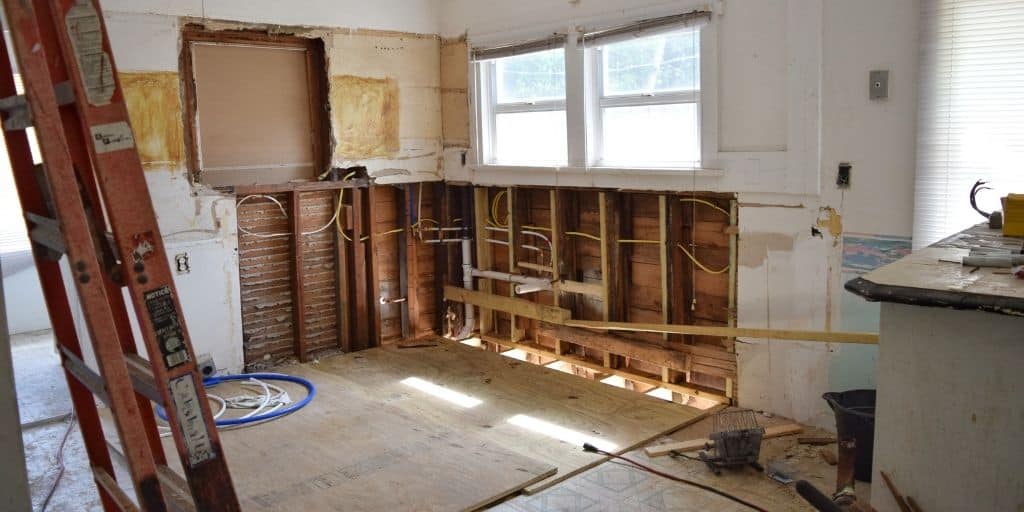What Is a Distressed Property?
Shortcuts: Distressed Property
- A distressed property is a real estate asset that’s in foreclosure, owned by a lender, or seized by the government due to unpaid taxes.
- Some professionals may also refer to a dilapidated, ill-maintained property as “distressed.”
- Investing in distressed properties is a good opportunity since they sell below market value.
- However, investors must also account for extensive due diligence costs, including title searches, property inspections, and repair estimates, among others.
- Common exit strategies for distressed properties include fix-and-flips, rentals, and wholesaling.
Understanding a Distressed Property
When a property owner is unable to make mortgage payments as agreed, the lender seizes the property in foreclosure and typically resells it at auction. If the lender is unable to do so, the ownership reverts to the lender, and the distressed property becomes an REO (real estate-owned) property.
Some lenders try to sell REOs on their own, while others work with real estate agents to list and sell the property.
What Does “Distressed” Mean?
The term “distressed” refers to both the physical state of the property and the financial situation of its owner. A property becomes distressed through various circumstances:
- Financial distress: When owners fall behind on mortgage payments, face bankruptcy, or encounter tax problems.
- Physical distress: When a property suffers from deferred maintenance, damage, or code violations.
- Legal distress: When properties face liens, title issues, or legal disputes.
It’s worth noting that distressed properties can fall into multiple categories simultaneously. For example, a property might face both financial and physical distress when an owner can’t afford mortgage payments or necessary repairs.
Types of Distressed Properties
In general, distressed properties fall into one of the following categories:
- Pre-foreclosures: Properties in pre-foreclosure indicate the owner has received a notice of default but hasn’t entered foreclosure. These situations create opportunities for buyers to purchase before bank repossession.
- REOs: REOs are bank-owned after failed foreclosure auctions. Banks sell these at less than market value, which is a fair trade because holding them creates ongoing expenses.
- Short Sales: In short sales, lenders agree to accept less than the outstanding mortgage balance. These transactions require lender approval and take longer to close than traditional sales.
- Tax Sale Properties: Properties with unpaid property taxes can be sold at auction by local governments, either in tax deed or tax lien sales. These sales come with risks, including existing liens and potential redemption periods.
How to Find and Invest In Distressed Properties
Distressed properties often end up selling for much less than they’re worth. If you’re an investor, this gives investors a chance to buy these distressed properties at a lower price, fix them up, and then sell them for a profit.
Finding these properties is a different matter entirely, though. Usually, investors can find them through banks that have already foreclosed on them. Banks don’t want these properties on their books and often sell them below market value, thinking they’d rather take a smaller loss now than keep paying for maintenance and taxes.
There are other ways to find distressed properties, as we’ve detailed below.
Where to Find Distressed Properties
Multiple listing services (MLS) and real estate sites such as Zillow list many distressed properties. In addition, a real estate agent with experience in distressed properties may also be a good resource, as they can do a comparative market analysis to help buyers determine a competitive offer.
Distressed properties draw a wide range of investors prepared to pay in cash, so potential buyers need to bring a solid offer.
Here are a few tips:
- Check local newspapers for auction notices or use sites such as Auction.com, RealtyTrac.com, and RealtyBid.com to find tax and foreclosure auctions. Distressed property sites such as Foreclosure.com are other good resources.
- Search bank and lender websites for REOs; many major banks (Bank of America, Wells Fargo, M&T Bank, BB&T, CitiMortgage, for example) manage their own listings.
- A surprising number of government agencies own distressed properties. In addition to the obvious ones (HUD, FHA, and VA), check the IRS, USDA, and FDIC sites. The U.S. Marshals website lists property seized by the FDI, DEA, and ATF.
- Network with local foreclosure and probate attorneys for leads on potentially distressed properties.
Real estate wholesalers often know the distressed property market better than anyone. They do the legwork of scanning auctions and tax sales. They may even have distressed properties in their pocket that have not hit the market yet.
RELATED: How to Dominate Your Market as a House Wholesaler
Using Data Services
You can also use data services like DataTree to find vacant and/or distressed properties. Here’s a video of how Seth does it for land.
If you’re interested in DataTree, click the button below to claim your discount:
Financing Options for Distressed Properties
Conventional loans rarely work for distressed properties, but specialized options exist.
- FHA loans: The FHA 203(k) loan covers both buying and fixing up the property. You only need to put down 3.5% of the total cost, which makes it easier to get started. The catch? You’ll need detailed plans and contractor estimates before the bank says yes. Still, it’s often the best choice for first-time investors.
- Hard money: A hard money loan can fund your deal in days, not months. Hard money lenders care more about what the property could be worth after repairs than its current condition. The downside is higher interest rates—usually 10% or more—plus extra fees. Some let you pay only interest during renovations, which helps with cash flow while you’re fixing the property.
- Portfolio lending: Some local banks offer their own programs for distressed properties. These can be great deals, such as lower interest rates if you fix up the property within six months. Some portfolio lenders even let you refinance without penalty once you’ve made improvements. It’s worth checking with banks in your area about these programs.
- Private money: Sometimes working with private investors (think family and friends) makes sense. Just make sure everything is in writing, such as how much money each person puts in, who pays for unexpected repairs, and how you’ll split the profits. Clear agreements keep everyone happy and help avoid problems later.
This list is just scratching the surface of creative financing options for your next real estate deal. Here are a few more ideas:
Exit Strategies for a Distressed Property
What’s your exit strategy to make money from buying this distressed property? Are you going to flip it for profit, or are you going to have it rented to generate recurring cash flow?
You have three main options after buying a distressed property:
- Fix and sell quickly: Known as a “fix-and-flip,” this can make the most money but requires careful planning. You need reliable contractors and enough cash to fund repairs. Most successful fix-and-flip investors budget 20% more than they think repairs will cost to cover surprises.
- Rent it out: If your area has strong rental demand, you might make more money over time by keeping the property. Good tenants can help pay your mortgage while the property value goes up. Just make sure the rent will cover your mortgage, taxes, insurance, and repairs.
- Wholesale to another investor: If you find a good deal but don’t want to handle repairs, you can sell your contract to another investor for a smaller, quick profit. This works best when you have a network of other investors looking for projects. The video below explains how it works in less than a minute:
Due Diligence for Distressed Properties
For a real estate investor, the importance of due diligence for distressed properties is especially important, perhaps even more so than regular transactions.
Here’s a step-by-step guide:
1. Title Search
Start by pulling two types of title searches: a current owner search and a 30-year chain of title. This often turns up surprising information, like old debts or claims to the property that could cause you trouble later.
Here’s how to do a title search on your own:
Also check with the city to see if there are unpaid utility bills or code violations you’d have to deal with.
2. Property Inspection
Next, get a thorough property inspection. Distressed properties often have hidden problems beneath surface-level fixes. A good inspector will look for:
- Foundation problems, often masked by quick cosmetic fixes.
- Roof damage that could have led to hidden water issues.
- HVAC systems that may have been stripped or neglected.
- Plumbing systems, particularly in vacant properties.
- Electrical systems that may have been modified improperly.
3. Get Estimates
Here’s a tip many new investors learn the hard way: whatever fix-up cost you think you’ll have, add leeway. The American Society of Home Inspectors (ASHI) suggests that repair costs often add 10-20% to initial budgets due to unforeseen issues.
Take lots of pictures and videos of everything you find—you’ll need these when dealing with contractors and insurance companies.
4. Deal With Permits and Zoning
Make sure all past work on the house was done legally with proper permits. If it wasn’t, you might have to redo work that was already done, which gets expensive fast.
Finally, check that the property is zoned the way you plan to use it. Some areas have strict zoning rules about rentals or home businesses.
Rehabbing Distressed Properties
When taking on a distressed property, you need a solid game plan for repairs and upgrades.
Prioritize Your Repairs
Addressing critical issues—such as roofing, plumbing, and electrical systems—should take precedence over cosmetic improvements. This ensures that the property is safe and structurally sound before enhancing its appearance.
Cosmetic changes, such as painting or landscaping, should be deferred until later. This approach not only saves time and resources but also allows for a clearer understanding of the property’s condition before investing in aesthetics.
Match Renovations to Your Strategy
Your renovations should mirror what you want to do with your distressed property. For example:
- For flips: Focus on visual impact without overspending. Upgrade kitchens and baths, but skip high-end appliances that won’t return their cost.
- For rentals: Choose materials that last. Install ceramic tile instead of vinyl, solid doors instead of hollow core, and commercial-grade carpeting in bedrooms.
Save Money on Materials
The more money you save rehabbing these properties, the more money you pocket at the end of the day.
That doesn’t mean skimping on materials and cutting corners during construction, though. Think outside the box; for example, you can talk to property managers if they’re selling barely used appliances at discounted prices (some often would when they’re upgrading rentals). You can also set up contractor accounts with suppliers for automatic discounts.
In addition, one way to future-proof your rentals is to invest in energy-efficient upgrades. Our newly updated guide on the 13 most energy-efficient upgrade ideas for remodeling is a good place to start.
Pros and Cons of Buying a Distressed Property
For real estate investors, there are several advantages and disadvantages to investing in distressed properties.
| Pros | Cons |
| Can often buy properties at a steep discount; with high potential profits. | Properties are typically sold “as is” and may require extensive repairs or renovation. |
| May acquire property in an otherwise unaffordable neighborhood. | The buyer may have to pay off other liens (mortgages, back taxes). |
| Bank-owned properties may have favorable financing options. | The buyer must have the cash to pay the auction price in full on the day of the auction. |
The process for buying a distressed property is different depending on whether it is a short sale, a foreclosure, or an REO. These are some things to keep in mind about each property type:
Short-Sale/Pre-Foreclosure
- The seller complies with property disclosures and inspections.
- The buyer can use mortgage financing.
- The lender must approve the sales agreement if the sales price does not cover the outstanding mortgage balance and closing costs in full.
Foreclosure Auction
- No inspections or disclosures are available; the buyer gets the property as-is.
- The buyer must be able to pay the purchase price in full on the day of the auction.
- The lender can buy the property at auction if they believe the price is too low.
- The buyer should do a title search before the auction or risk being liable for other mortgages and liens.
REOs
- Lenders can negotiate the sales price, down payment, closing costs, and escrow length; mortgage financing is an option.
- The buyer will get a clear title to the property.
- The lender cannot provide disclosures, but inspections are allowed. However, the lender typically will not perform repairs, so the property is sold as-is.
RELATED: Foreclosure.com Review: How Can It Help Real Estate Investors?
Distressed Properties vs. Distressed Mortgages
Distressed properties and distressed mortgages are closely related but not exactly the same.
- A distressed property is real estate in poor physical or financial condition. It’s often the result of the owner’s inability to afford repairs, upkeep, property taxes, or mortgage payments.
- A distressed mortgage refers to a loan that is in danger of default or is already in default. It occurs when a borrower is unable to make full repayments on time due to financial difficulties.
Their relationship is often a negative feedback loop, often resulting in financial loss. For example, distressed properties may result in a distressed mortgage. If a property’s value declines significantly due to poor condition or market factors, the mortgage may become “underwater,” potentially leading to default.
On the other hand, a distressed mortgage can also lead to a distressed property when a borrower can’t make mortgage payments. The property may then fall into disrepair due to a lack of funds for maintenance.
Frequently Asked Questions: Distressed Properties
How long does it take to close on a distressed property?
First, consider the type of sale, as this largely determines your timeline. For instance, cash purchases of bank-owned (REO) properties typically close within 30-45 days. Even faster are pre-foreclosure deals with cash funding, which can wrap up in just 2-4 weeks.
However, short sales often drag on for 4-5 months while waiting for lender approval. Meanwhile, tax sales move quickly at the auction but come with a significant catch; in some states, the original owner maintains redemption rights for up to 2 years to reclaim the property by paying their debt.
What are the risks of buying properties at foreclosure auctions?
Before diving into foreclosure auctions, understand these critical requirements and risks. To begin with, you won’t get a chance to inspect the property’s interior beforehand. Most of the time, you’re buying the property “as-is” without any warranties.
Beyond these immediate concerns, the property might have hidden complications: outstanding liens against the title, current occupants requiring formal eviction, or redemption rights allowing the previous owner to reclaim it by settling their debt.
Given these substantial risks, thorough research is a must before placing any bids.
Can I get traditional financing for a distressed property?
The answer largely depends on the property’s condition. On the positive side, FHA 203(k) loans provide a comprehensive solution by covering both purchase and renovation costs.
However, conventional lenders take a more cautious approach. While they might finance properties needing minor repairs, they’ll typically reject those with major structural damage or code violations.
Above all, the property must meet minimum safety and habitability standards. Failing these basic requirements will almost certainly result in lenders rejecting the loan application.
References
- Arrived, “What Is a Distressed Property?” https://arrived.com/blog/distressed-property
- Quicken Loans, “Preforeclosure: What It Is And How It Works.” https://www.quickenloans.com/learn/pre-foreclosure
- Oregon Realtors, “Understanding the REO Market.” https://oregonrealtors.org/rmt_article/understanding-the-reo-market/
- USA.gov, “Real estate and federal lands for sale by the government.” https://www.usa.gov/real-estate-sales
- Macoy Capital, “Hard Money Loan Rates: 2024.” https://macoycapital.com/hard-money-loan-rates-2024/
- AEI Consultants, “Investing in Distressed Assets? Prioritize Due Diligence.” https://aeiconsultants.com/investing-in-distressed-assets-prioritize-due-diligence/
- REIkit, “The Steps to a Subject To Real Estate Deal.” https://www.reikit.com/wholesaling-houses/acquisition/steps-to-a-subject-to-real-estate-deal
- My Home by Freddie Mac, “Tips for Renovating a Distressed or Foreclosed Property.” https://myhome.freddiemac.com/blog/homeownership/tips-for-renovating-a-distressed-or-foreclosed-property
- Thomas B. Day, PA. “Maximizing ROI: Top Renovations That Pay Off in 2024.” https://www.tomdayproperties.com/blog/maximizing-roi-top-renovations-pay-2024/
- Express Home Buyers, “What Closing Time Frame Can Cash Home Buyers Realistically Expect?” https://www.expresshomebuyers.com/outreach/what-closing-time-frame-can-cash-home-buyers-realistically-expect/
- Reid Real Estate Group, “How long will a short sale take? Get the scoop on short sale timelines.” https://reidrealestategroup.com/long-will-short-sale-take/








